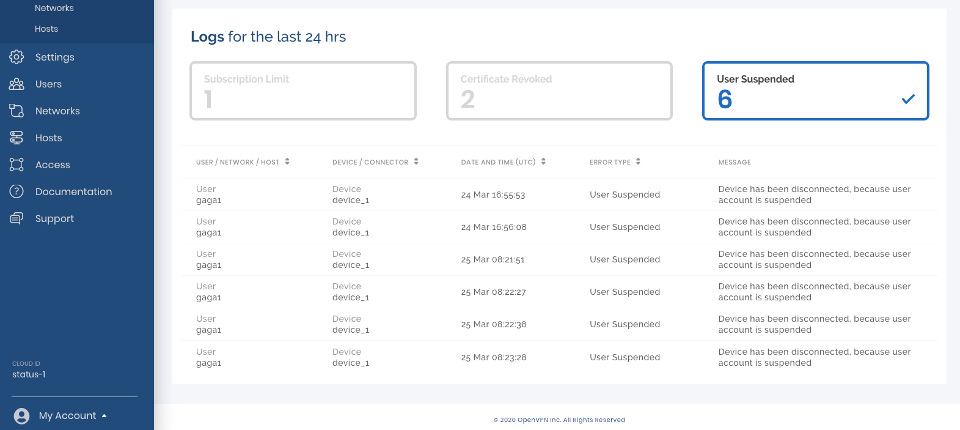

Save the configuration file and restart the OpenVPN server for the changes to take effect. If your OpenVPN version is below 2.2, then you should instead set reneg-sec to a very large value. Old versions of OpenVPN may fail to connect with reneg-sec set to 0. Therefore, we recommend disabling reneg-sec by setting it to 0 in your server configuration file: reneg-sec 0
#Openvpn logs password
If your user's VPN client saves the password and automatically re-authenticates with it, this may cause issues with the user receiving unexpected push notifications or their client replaying a one-time passcode. This setting defaults to 3600 seconds, which means your users must re-authenticate every hour. This option will determine how often OpenVPN forces a renegotiation, thereby requiring the user to re-authenticate with Duo. We also recommend setting the reneg-sec option in the server configuration file. OpenVPN 2.3 or earlier: plugin /opt/duo/duo_openvpn.so IKEY SKEY HOSTīe sure to replace IKEY, SKEY, and HOST on the plugin line with the integration key, secret key, and API hostname from your OpenVPN application's properties page in the Duo Admin Panel. OpenVPN 2.4 and later: plugin /opt/duo/duo_openvpn.so 'IKEY SKEY HOST' etc/openvpn/nf or /etc/openvpn/nf) and append the following line to it: Open your OpenVPN server configuration file (e.g. The duo_openvpn.so plugin and duo_openvpn.py Python helper script will be installed into /opt/duo.
#Openvpn logs install
Then simply extract, build, and install the plugin.
#Openvpn logs download
To get started with the Duo OpenVPN plugin, download the Duo OpenVPN v2.4 plugin. Ensure Python 3 or 2.7 is installed on your OpenVPN server.Download the Duo OpenVPN v2.4 plugin from our duo_openvpn GitHub repository.See Protecting Applications for more information about protecting applications in Duo and additional application options. You'll need this information to complete your setup.

Click Protect to the far-right to configure the application and get your integration key, secret key, and API hostname.

#Openvpn logs how to
First Stepsīefore moving on to the deployment steps, it's a good idea to familiarize yourself with Duo administration concepts and features like options for applications, available methods for enrolling Duo users, and Duo policy settings and how to apply them. If your organization requires IP-based rules, please review this Duo KB article. Firewall configurations that restrict outbound access to Duo's service with rules using destination IP addresses or IP address ranges aren't recommended, since these may change over time to maintain our service's high availability. This application communicates with Duo's service on TCP port 443.


 0 kommentar(er)
0 kommentar(er)
